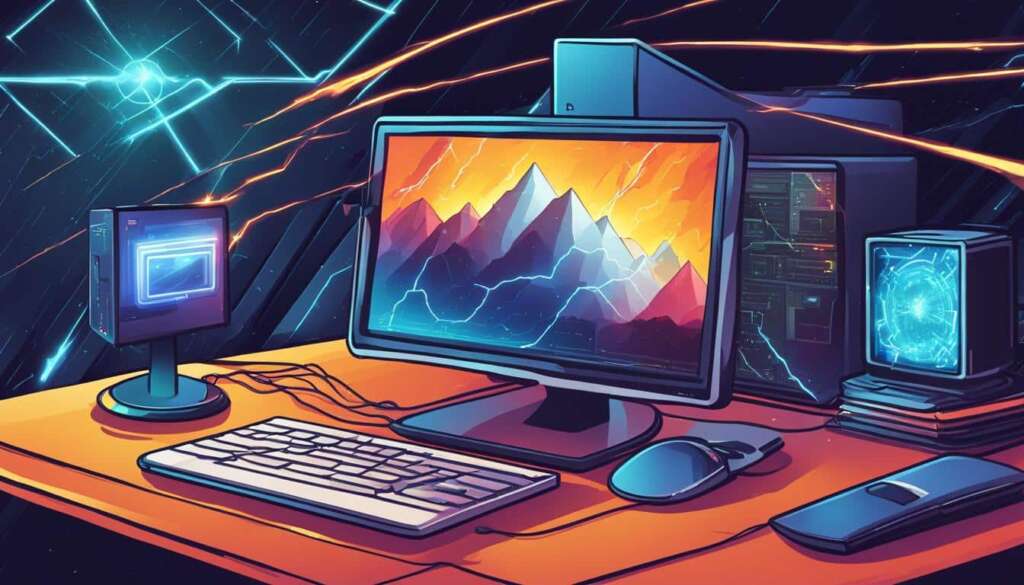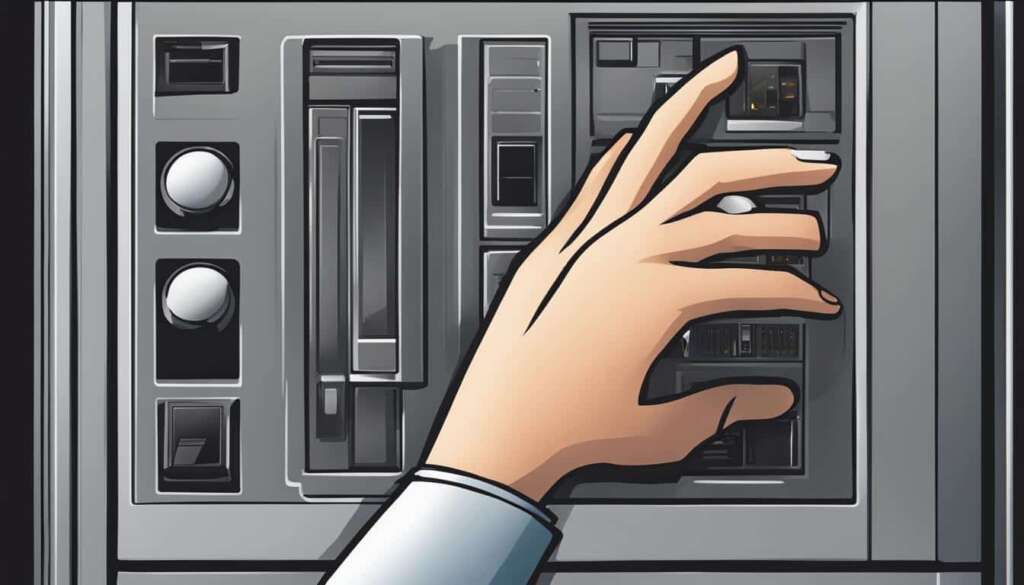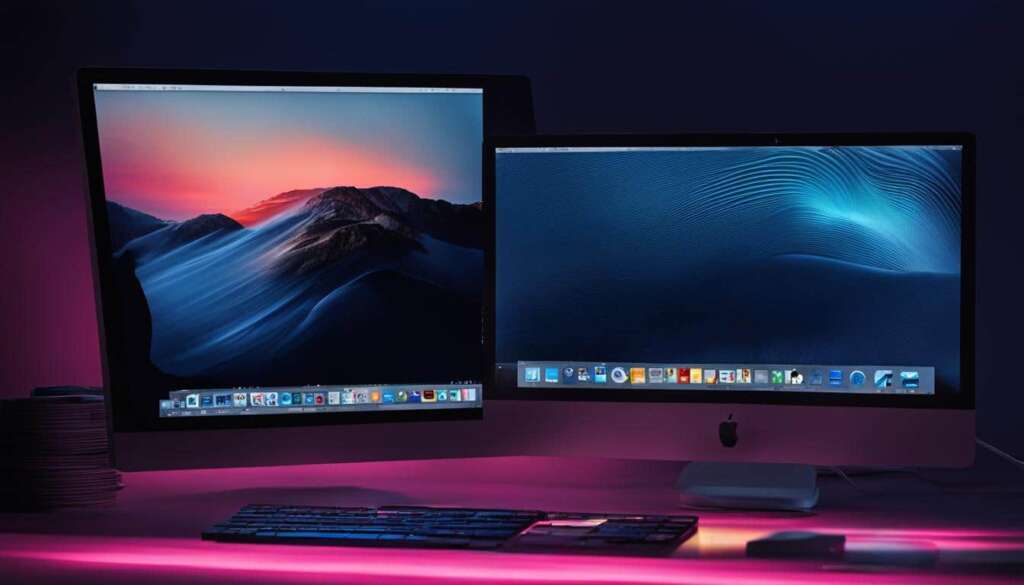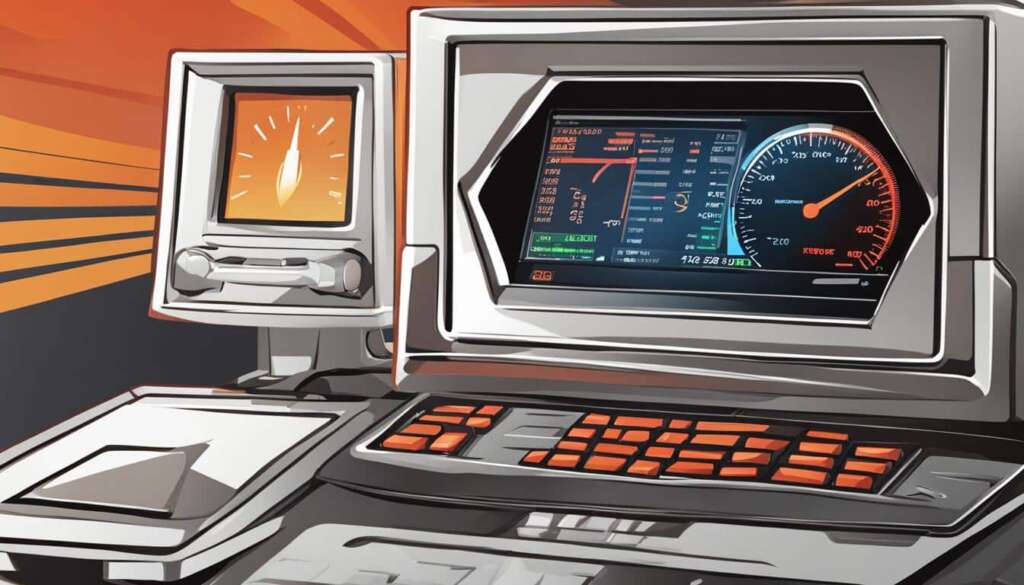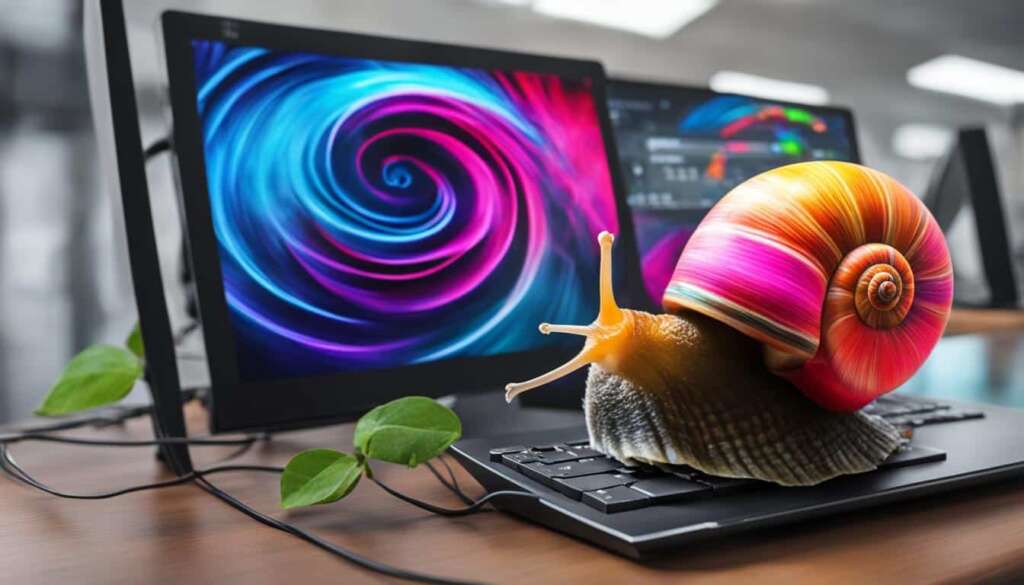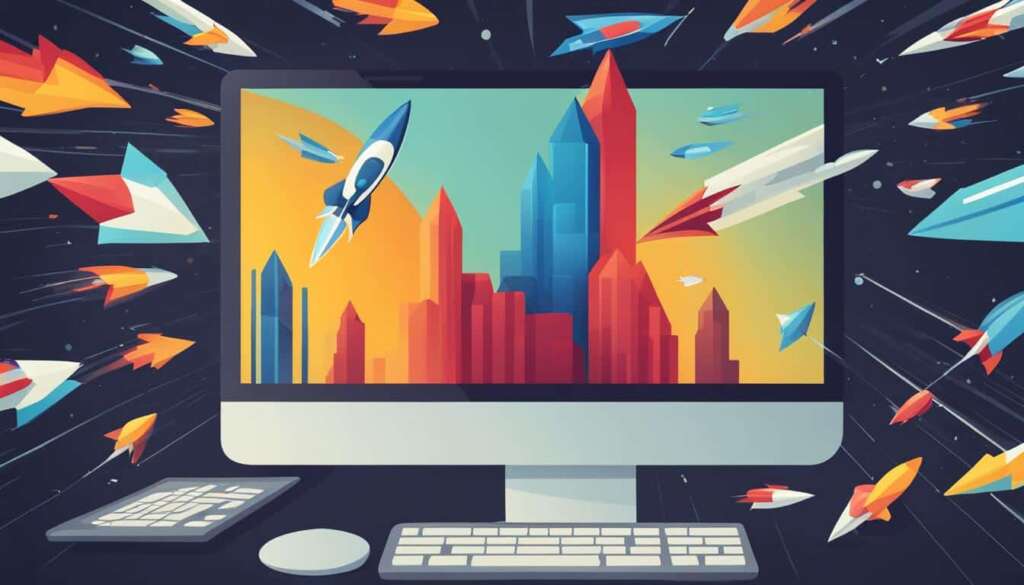Table of Contents
To boost PC speed and make your PC run faster, it’s essential to optimize its performance. Whether you’re using Windows 10 or the latest Windows 11 operating system, there are several steps you can take to enhance your computer’s speed and efficiency.
Changing your power settings is one effective method. If you’re currently using the “Power saver” plan, switching to either “High performance” or “Balanced” can provide an instant performance boost. By adjusting your power settings, you allow your PC to utilize its resources more effectively, resulting in faster speeds.
Disabling unnecessary programs that run on startup is another valuable action. These programs consume system resources and slow down your PC’s boot time. By using the Task Manager to identify and disable these programs, you can ensure a faster and smoother startup process.
Additionally, cleaning up your disk can significantly improve your PC’s speed. Windows provides a built-in Disk Cleanup utility that helps remove temporary files, offline web pages, and other unnecessary clutter. By clearing up space on your hard drive, you enable your PC to function more efficiently and achieve faster performance.
Another way to boost your PC’s speed is by adding more RAM. Random Access Memory (RAM) allows your computer to handle multiple tasks simultaneously. Upgrading from a lower amount of RAM to a higher capacity can lead to noticeably faster speeds and smoother multitasking.
Furthermore, installing an SSD startup drive can greatly enhance your PC’s performance. Solid-state drives (SSDs) are faster than traditional hard drives and offer faster boot times and application loading speeds. By choosing an SSD as your primary drive, you can experience a significant improvement in overall system speed.
Lastly, keeping your drivers up to date is crucial for optimal performance. Regularly updating your drivers ensures compatibility with the latest software and hardware updates, resulting in improved speed and stability for your PC.
By following these steps and utilizing the recommended methods, you can effectively boost your PC speed and enjoy a quicker computing experience.
Change Power Settings and Disable Startup Programs
When it comes to boosting your PC speed, adjusting your power settings can make a significant difference. If you’re currently using the “Power saver” plan, consider switching to either the “High performance” or “Balanced” plan to instantly enhance your PC’s performance. These power settings can optimize your computer’s resources and improve its overall speed and responsiveness.
Another effective way to increase your PC’s speed is by disabling unnecessary programs that run on startup. These programs can consume valuable system resources, leading to slower boot times and decreased performance. By identifying and disabling these programs, you can free up system resources and ensure a faster startup process.
The easiest way to identify and disable startup programs is by using the built-in Task Manager in Windows. Simply press Ctrl + Shift + Esc to open Task Manager, then navigate to the “Startup” tab. This tab lists all the programs that launch automatically when your PC starts up. From here, you can choose which programs to disable, preventing them from running in the background and causing system slowdowns.
Steps to change power settings and disable startup programs:
- Open the Start menu and search for “Control Panel”.
- Click on “Control Panel” to open it.
- In the Control Panel window, click on “Power Options”.
- Under the “Preferred plans” section, select either the “High performance” or “Balanced” plan.
- To disable startup programs, right-click on the taskbar and select “Task Manager” from the menu.
- In the Task Manager window, click on the “Startup” tab.
- Identify the programs you want to disable and right-click on them.
- Select “Disable” from the context menu.
- Close the Task Manager and restart your computer to apply the changes.
By following these steps, you can harness the full power of your PC by fine-tuning its power settings and eliminating unnecessary startup programs. Your computer will run more efficiently, allowing you to work, play, and multitask with ease.
Clean Up Your Disk and Add More RAM
One of the most effective ways to improve the speed and performance of your PC is by cleaning up your disk. Over time, your computer accumulates temporary files, offline web pages, and other unnecessary clutter that can slow it down. The Disk Cleanup utility in Windows allows you to remove these files and free up valuable space on your hard drive.
By freeing up disk space, you not only optimize your PC’s performance but also create room for new files and applications. This can prevent your computer from getting sluggish and ensure smooth multitasking.
Additionally, adding more RAM (Random Access Memory) to your system can have a significant impact on its speed. RAM is responsible for temporarily storing data that your computer actively uses. When you have insufficient RAM, your computer relies heavily on virtual memory, which is significantly slower.
By adding more RAM, you provide your computer with the ability to handle multiple tasks simultaneously, leading to faster response times and smoother overall performance. Whether you’re running resource-intensive applications, watching HD videos, or multitasking extensively, having ample RAM can make a noticeable difference.
So how much RAM do you need? The amount of RAM required depends on your usage patterns and the applications you use. For basic tasks like web browsing, word processing, and email, 4-8GB of RAM is generally sufficient. However, if you frequently work with demanding software, edit videos, or play graphics-intensive games, you might benefit from 16GB or even 32GB of RAM.
| RAM | Recommended Usage |
|---|---|
| 4-8GB | Basic tasks, web browsing, word processing, email |
| 16GB | Resource-intensive applications, multitasking, moderate gaming |
| 32GB or more | Heavy multitasking, video editing, high-end gaming |
Before upgrading your RAM, it’s essential to ensure compatibility with your computer’s motherboard and operating system. You can consult your computer manufacturer’s website or the motherboard documentation for specific guidelines.
“Cleaning up your disk and adding more RAM are two tried-and-true methods for boosting your PC’s performance. By removing unnecessary files and increasing your computer’s working memory, you can enjoy a faster and more efficient computing experience.”
Now that you know the benefits of cleaning up your disk and adding more RAM, it’s time to take action and optimize your PC’s performance. Clean up your disk regularly, uninstall unnecessary programs, and consider upgrading your RAM if your current configuration is limiting your productivity. By implementing these steps, you’ll be well on your way to enjoying a faster and more responsive computer.
Install an SSD Startup Drive and Update Drivers
Looking to supercharge your PC’s speed and performance? Consider installing an SSD startup drive and keeping your drivers up to date. Upgrading your startup drive to a solid-state drive (SSD) can revolutionize your computing experience. SSDs are lightning-fast compared to traditional hard drives, significantly reducing boot times and application loading times. By installing an SSD as your primary drive, you’ll witness a remarkable improvement in your system’s overall speed and responsiveness.
But that’s not all—updating your drivers is equally crucial for maintaining optimal performance. Regularly updating your drivers ensures compatibility with the latest software and hardware updates. This compatibility not only enhances speed but also promotes stability. Outdated drivers can lead to compatibility issues, ultimately hampering your PC’s speed and performance. Stay ahead of the game by regularly checking for driver updates and installing them promptly.
So, how exactly do you install an SSD startup drive and update your drivers? Here’s a step-by-step guide:
- Consult your PC’s manual or the manufacturer’s website for specific instructions on installing an SSD. Ensure you have the necessary tools and cables, and backup any important data before proceeding.
- Physically install the SSD into an available drive bay, following the manufacturer’s instructions. Make sure it is securely connected.
- Once the hardware installation is complete, you’ll need to transfer your operating system and files onto the SSD. Consult the manufacturer’s documentation or seek professional assistance for assistance with this process.
- To update your drivers, visit the manufacturer’s website for your PC or the individual components (e.g., graphics card, motherboard). Look for the “Support” or “Downloads” section, and search for the latest driver updates specific to your model.
- Download and install the updated drivers, following the instructions provided by the manufacturer. It’s recommended to create a system restore point before proceeding to safeguard against any unforeseen issues.
- Restart your PC to apply the driver updates and enjoy the improved speed and performance conferred by your shiny new SSD startup drive!
By following these steps, you’ll be well on your way to unleashing the full potential of your PC. Embrace the power of an SSD startup drive and stay up to date with your drivers for a faster, smoother, and more efficient computing experience.
FAQ
How can I boost my PC speed?
There are several steps you can take to boost your PC speed. You can change your power settings, disable unnecessary startup programs, clean up your disk, add more RAM, install an SSD startup drive, and update your drivers.
How do I change my power settings?
To change your power settings, go to the Control Panel and select “Power Options.” From there, you can choose between different power plans such as “High performance” or “Balanced” to optimize your PC’s performance.
How can I disable startup programs?
You can disable startup programs by opening the Task Manager and navigating to the “Startup” tab. From there, you can identify and disable unnecessary programs that are set to run on startup, freeing up system resources and improving speed.
How do I clean up my disk?
To clean up your disk, you can use the Disk Cleanup utility in Windows. Open File Explorer, right-click on your main drive (usually C:), select “Properties,” and under the “General” tab, click on “Disk Cleanup.” This tool will help you remove temporary files, offline web pages, and other unnecessary files that may be cluttering your system.
How can adding more RAM improve my PC’s speed?
Adding more RAM to your PC can significantly improve its speed and performance. RAM allows your computer to run multiple tasks simultaneously, and upgrading from a lower amount to a higher amount can result in faster speeds and smoother multitasking.
How do I install an SSD as a startup drive?
Installing an SSD as a startup drive involves physically replacing your current hard drive with the SSD and reinstalling your operating system. This can greatly improve your PC’s speed, as SSDs are faster than traditional hard drives and can significantly reduce boot times and application loading times.
Why is it important to update my drivers?
Updating your drivers is essential for optimal PC performance. By regularly updating your drivers, you ensure compatibility with the latest software and hardware updates, which can result in improved speed, stability, and overall performance.

